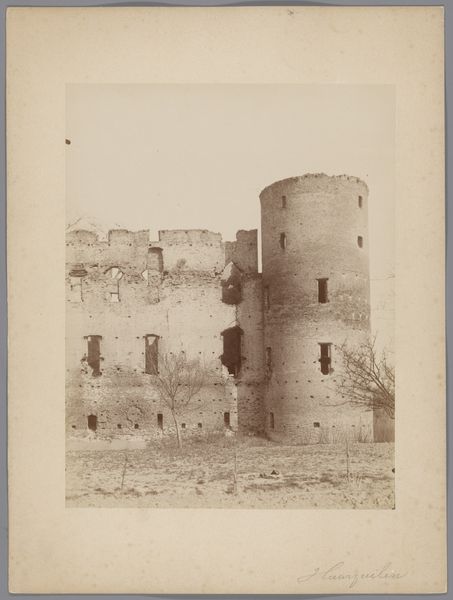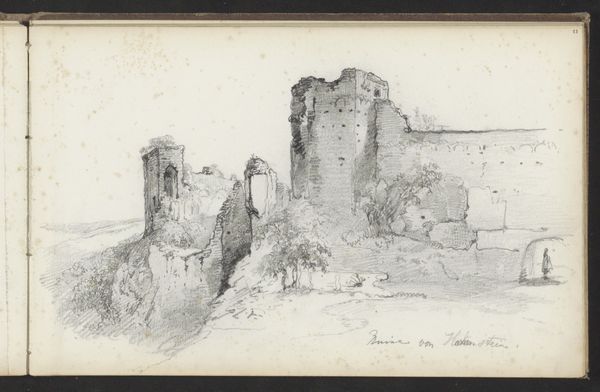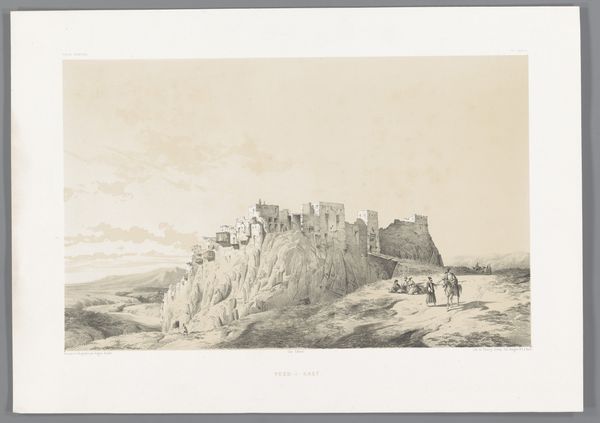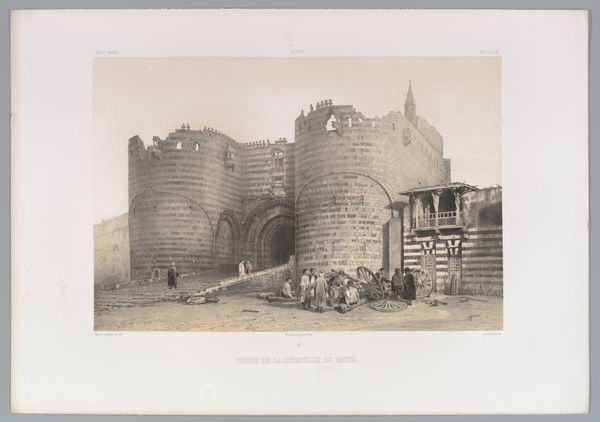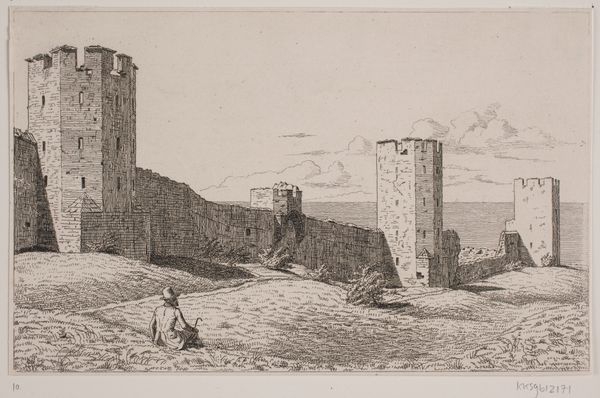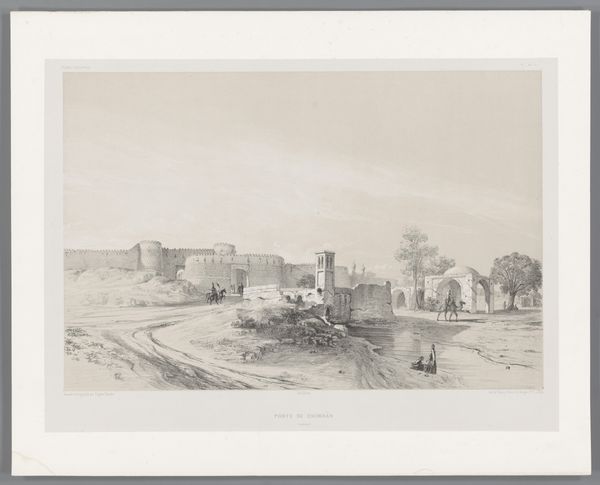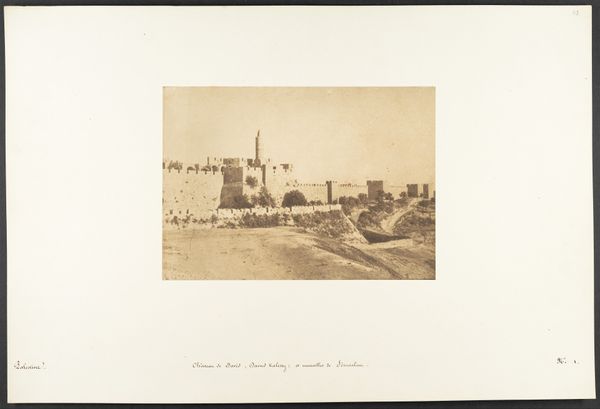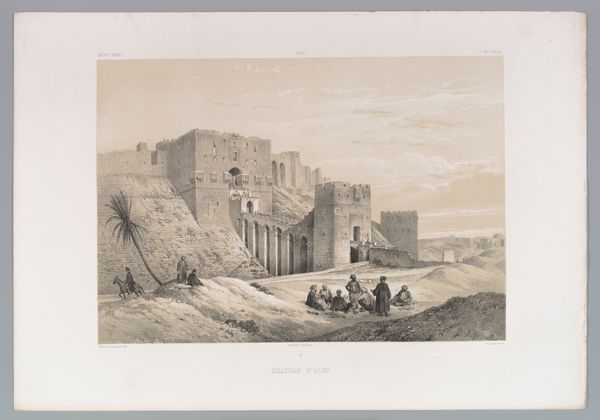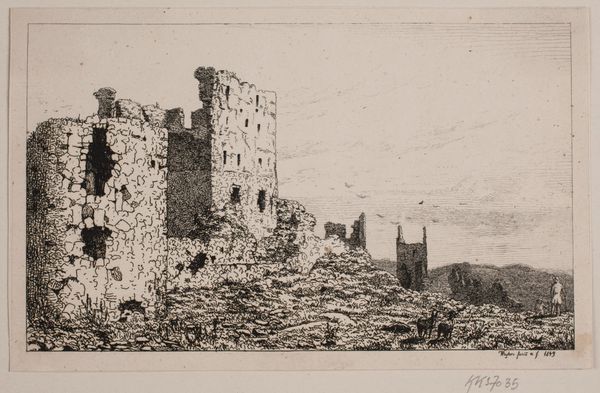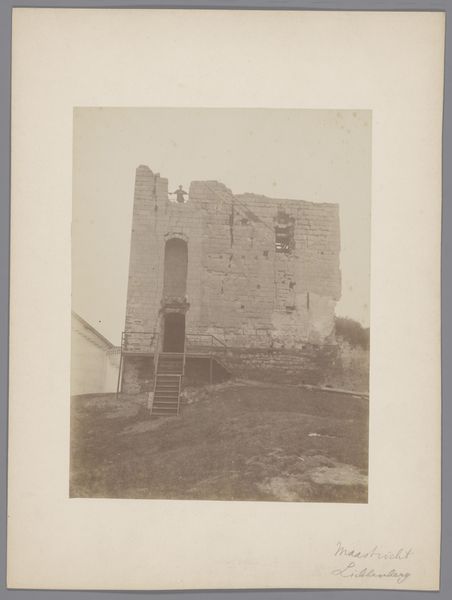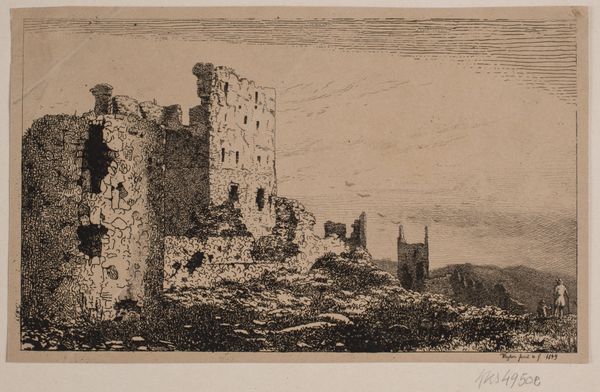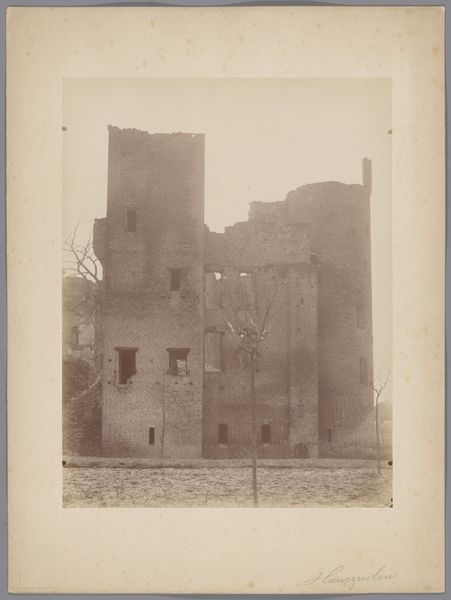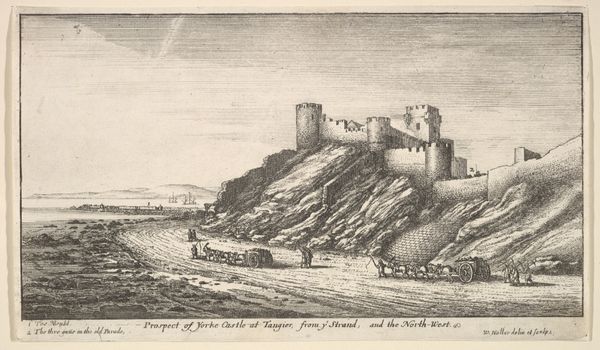
drawing, lithograph, print, paper, ink
drawing
narrative-art
lithograph
landscape
perspective
paper
ink
cityscape
islamic-art
Dimensions: height 278 mm, width 408 mm
Copyright: Rijks Museum: Open Domain
Curator: Looking at this piece by Eugène Flandin, titled "Versterkt dorp Taghrud," created between 1843 and 1854 and held at the Rijksmuseum, I'm struck by its textural variations, from the smooth paper to the detailed ink work bringing this city scene to life. Editor: My initial impression is one of muted grandeur. The tonality creates a somewhat melancholic atmosphere. I'm drawn to the careful articulation of perspective and the layering of elements within the scene. Curator: Indeed. Consider the context. Flandin, as part of a diplomatic mission to Persia, was documenting what he saw, which then shaped the perception of Persia in Europe through prints like these. Editor: Let's look at those lithographic stones, right? The medium is crucial. Lithography allows for this impressive detail and replication, shaping the image’s distribution and thus its impact. It's fascinating how the labor is baked into this object. Curator: Absolutely. And the materiality affects the imagery; the monochromatic ink lends a sense of gravitas to the depiction of the city, making it appear almost timeless. I wonder, also, about Flandin’s hand – was this directly drawn on the stone, or copied? That process surely informed the final product. Editor: Thinking about composition and perspective further, I note how the architectural mass anchors the visual field. Then there's that strategic positioning of figures to suggest depth and movement; this careful balancing of elements evokes narrative possibility even within its muted tones. The viewer is compelled forward, drawn into the village Taghrud’s silent drama. Curator: It really forces us to think about what's missing—the people who built this town and maintained it. And think about this image becoming accessible to a consumer market fascinated by the exoticized Orient through a rising popular medium! The act of dissemination here truly cements a historical view. Editor: Well said, that’s where form serves content! Flandin's visual syntax transforms historical realities through selection, style, and process; thereby achieving aesthetic integrity as much intellectual stimulation… it all works beautifully. Curator: Agreed, there is far more here when considering the convergence of industrialization and representation— the way these drawings entered circulation, and became a symbol of an encounter of worlds. Editor: Precisely. Reflecting on "Versterkt dorp Taghrud" reveals not just how aesthetics construct experience through formal ingenuity... Curator: ...but also how the making and consumption of art inevitably shaped, and were shaped by, history itself.
Comments
No comments
Be the first to comment and join the conversation on the ultimate creative platform.
